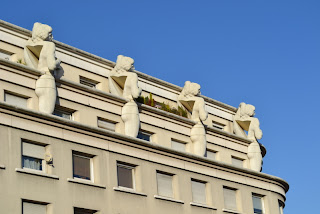On December 11th, a group of mayors from France's Auvergne region organised a protest in Paris against the transfer of their trains from the Gare de Lyon to the Gare de Bercy. Smartly dressed and wearing their stripes of office, the mayors were also carrying a coffin, a sign that - for them - this move represented a ‘burial’ for their region.
"Les Auvergnats sont déprimés de devoir arriver dans une gare qui ne procure aucun confort, aucun hôtel, on a l'impression d'être traités comme des gens arriérés, comme des ploucs" (the Auvergnats are depressed about having to arrive at a station without comfort or hotels, and we feel as if we are being treated like backward people, like hillbillies), said Claude Malhuret, the Mayor of Vichy. But is this train station really so bad?
What is true is that it is difficult to find. It is hidden away up on a plateau, with no direct links by Metro or bus. Access by foot is along a busy road, under a succession of dark and noisy railway bridges.
In reality, the station is simply an annex of the Gare de Lyon, built in the 1970s specifically for the 'auto-trains' service that ferries cars across the country. It replaced a simple goods station, where wine production from across France would arrive, before being stocked in the famous nearby Bercy 'chars'.

Arriving in front of the station, the lack of any distinctive design is immediately striking. There is no neo-classicism from the railway's golden age, only 1970s functional architecture. The ensemble is curiously colourless. Apart from the sparsely decorated Christmas tree in the car park, nothing justified the use of colour photography.
Inside it is the image of a small, provincial station. There is no buzz of arriving and departing trains, but rather small groups of drowsy and listless passengers. There are no shopping arcades to keep them amused, and they sit in rows, their eyes sweeping the room in search of a single decorative feature that they might focus on.
Above there is a second level - another rather sinister waiting room, with plastic chairs and plastic plants. A door offers access out to the car park, where vehicules wait before being loaded onto the car trains. A group of youths are sit broodingly on a wall, but whether they waiting for a train or for life to catch up with them is not clear.
All that is left - beyond a sprinkling of slow regional trains, is the auto-trains service. The thick slabs of dark, heavy concrete that make up the infrastructure give it a film-noir atmosphere, especially when it is empty. Indeed, it seems entirely natural to read that a member of the ETA Basque separatist movement was spotted by police here then trailed to his point of arrest.















































